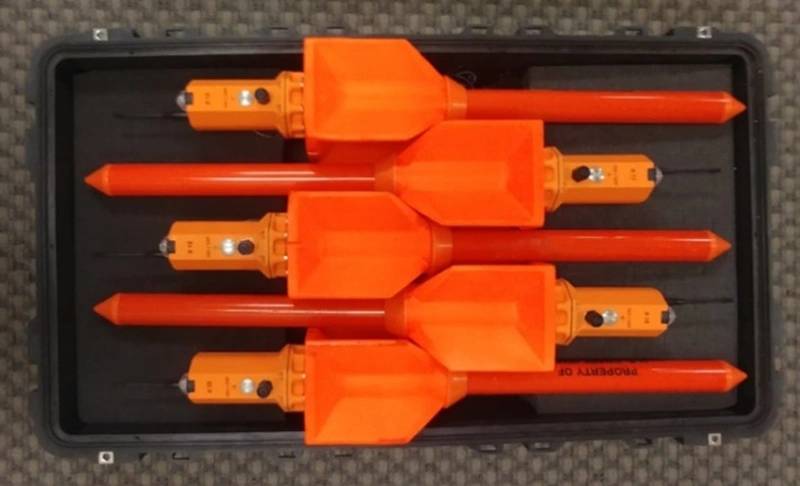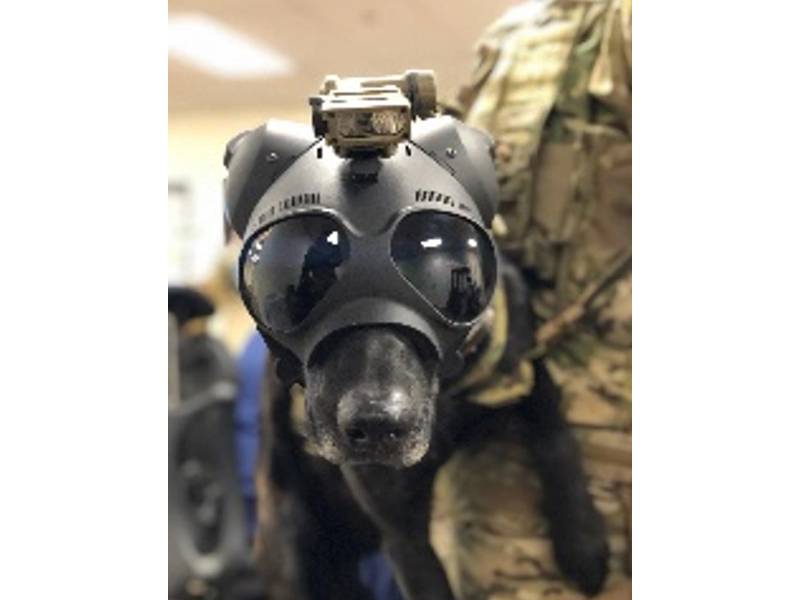USCG RDC: Vessels, Tech, Partnerships Help to Thwart Narcotics, Human Smugglers
In 2011 the 210-foot Coast Guard Cutter VIGILANT was on patrol in the Caribbean when it came upon a suspected maritime narcotics smuggler. As the chase ensued, the suspected smuggler jettisoned bales of what turned out to be cocaine. The VIGILANT crew marked the position on their radar and gathered the latitude and longitude for the bales, then went in pursuit of the suspect vessel. After the suspect was apprehended, the VIGILANT returned to the original position in search of the bales, eventually finding one.
At that time, it was standard practice to use paper plates to help track jettisoned contraband. The requirement to track and retrieve bales, which serve as evidence, is a critical part of the interdiction process.
Following that mission, the cutter’s crew sent a message to both USCG Atlantic Area and the Coast Guard Research and Development Center (RDC) asking for research to be conducted regarding development of a mobile tracking system that could be jettisoned and inexpensively serve as a moving beacon for the bales. The RDC took on the challenge and developed multiple prototypes of the Maritime Object Tracking Technology or MOTT. This included drift studies to determine tracking object characteristics like bale drift parameters.
Over the next few years, the RDC developed prototypes and deployed them to major cutters in the Atlantic and Pacific. Sometime after completing early prototype evaluations as part of a research project in 2014, one innovation adapted the electronics found in GPS-tracking hunting dog collars with a small floating buoy printed on RDC’s 3-D printer. Following that early prototype effort, the RDC Science and Technology Innovation Center (STIC) partnered with the Naval Air Warfare Center to develop a custom-designed Automatic Identification System (AIS) marker buoy. Twenty MOTTs, a MOTT User’s Manual, and a MOTT Technical Design Package were produced. The RDC did all of that while continuing to work with operational Coast Guard units to evaluate the operational use.
For example, in the Spring of 2020, U.S. Southern Command began enhanced counter narcotics operations in the Western Hemisphere to disrupt the flow of drugs. The RDC took this opportunity to help operational commanders by packaging promising technologies into easy-to-use Go-Kits and shipping them to cutters at the speed of need. (See picture of MOTTs next to the picture of a Coast Guard canine equipped with RDC protective technology.) Included in these kits were MOTTs and Human Language Translators (HLTs) along with a low cost remotely operated vehicle, narcotics detection device, x-ray backscatter, firearms trainer, and imaging systems. Both the MOTTs and HLTs were successfully employed by the crews.
The MOTT and HLT were then transferred to the Department of Homeland Security (DHS) Science and Technology (S&T) Silicon Valley Innovation Program (SVIP) to get the MOTT and HLT to private industry for production. SVIP invests in startup companies for prototyping projects to adapt capabilities that are commercially sustainable while meeting the needs of DHS operational components. Both the MOTT and HLT are technologies that will be great tools for the operational Coast Guard and had their start with RDC.

The RDC receives an appropriation from Congress of $7.5 million to support the execution of research for the entire Coast Guard. The limited resources are applied deliberately to priority research projects and support of commercial and government-off-the-shelf (COTS/GOTS) technology evaluations.
The discipline of research is important to the service in building toward new strategic capabilities. For RDC, these discipline ingredients include adherence to scientific integrity; human subject research protocols; solid experimental design; risk-based project management; adherence to environmental and privacy protection policies; and compliance with the many enterprise authorities to test and evaluate on Coast Guard systems and assets. These disciplines apply to RDC research projects that are typically longer-term and potentially transformative --- projects like the Next Generation Aids to Navigation (ATON), VHF Data Exchange System (VDES) --- essentially the next generation of AIS, and recent adoption of Starlink/Starshield communications aboard Coast Guard cutters. However, Coast Guard operators want technology rapidly to enhance mission performance today and to counter bad actors that have access to the same innovation ecosystem. With its limited resources, RDC does both strategic research and evaluations of high technology readiness COTS/GOTS technologies. These efforts are often mutually complimentary.
Time horizons for a typical RDC research project may be several years before it is fully transitioned to Program Office ownership. It stands to reason that high readiness COTS/GOTS technologies should have a shorter path to operations, especially if unit funding is available for mission performance tools.
RDC thought that there was a near-term win for operators when RDC completed the MOTT and the HLT evaluations. DHS S&T SVIP stepped in to assist with these two efforts. RDC completed the MOTT and HLT projects in 2017 and 2019. They are currently in the final phase under SVIP transition. SVIP funded business partners to develop HLTs with current plans to have units ready for operational testing in 2026. A benefit of SVIP is that items that are ultimately developed can be procured under the sole source process. There will be many useful applications for an HLT in the Coast Guard and probably the most challenging is to provision boarding teams with a universal translator that works at the speed of natural language in disconnected environments. While RDC recommended, at the time, not to use devices evaluated in some tactical interactions because of its translation time delay, COTS/GOTS technology advanced quickly with existing solutions that could be immediately deployed while longer-term and more sophisticated solutions were developed.
The MOTT is but one of many examples of a long history of engagement in technologies and research that enhance the capabilities of Coast Guard units and their parent commands in detecting, disrupting, discovering, and interdicting human and narcotics smuggling operations. Each of the RDC’s projects have contributed to Coast Guard mission success. Examples of the type of research that originated at RDC to help thwart smuggling:
- Non-lethal stopping capability – including the use of pepper balls, various unambiguous warning technologies, engine disabling capabilities, and various entanglement systems.
- Derelict abandoned vessel marking – so that air and surface assets identify vessels that have been previously checked so precious response resources are not expended more than once for the same vessel.
- Small Unmanned Aircraft Systems (sUAS) – extensive testing of sensors and capabilities including detect and avoid technology to enable sUAS surveillance beyond line-of-sight on Coast Guard cutters – especially for those without helicopter flight decks.
New efforts include testing of body worn cameras in support of future requirements and efforts that engage both public and private sectors in helping the Coast Guard think differently. An example includes an upcoming deterrence-focused EVERGREEN event that aims to formally define deterrence and offer Coast Guard ways to embrace and employ it across mission areas, including counter drug, and migrant patrol planning. (The purpose of EVERGREEN is to provide the Coast Guard with the essential tools, knowledge, and insights to act effectively despite much greater uncertainty about the future. The process is not designed to supersede or diminish the tradition of rapid response and tactical flexibility that has been the hallmark of the Coast Guard.)
In addition, the RDC has the Coast Guard’s only optionally crewed and uncrewed small boats. One of these craft is a converted 29-foot Response Boat Small (RBS) that was deployed to the southwest border. Equipped with an array of sensors, the platform provided force multiplying capability linking with air, surface, and shoreside assets. The flexibility that this platform provided was significant to the hosting Coast Guard Sector and Station.
The RDC, located in New London CT, has 82 staff members, and consistently delivers impactful products designed to support the operational and tactical components in completion of their mission. In fiscal year 2023, the RDC completed 16 research projects and delivered 69 products to the Coast Guard. A great deal of the RDC portfolio focuses on strategic research but understanding the operational advantages and efficiencies of existing and emergent technology will always be a focus. A particular challenge is to find ways to energize the faster adoption of lower investment technology solutions to equip operators at the speed of need. RDC is fortunate to have lab partners in DoD like U.S. Army Combat Capabilities Development Command, Air Force Research Laboratory, and Office of Naval Research, and in DHS like National Urban Security Technology Laboratory and Customs and Border Protection that value research but also the need to put high readiness technology into the hands of the Nation’s warfighters and first responders as quickly as possible. RDC also turns to the private sector to help the Coast Guard with awareness of emergent technology and direct partnering of technology investigations.
If you are interested in working with this small, dedicated team in support of Coast Guard missions, watch for future RDC requests for information and cooperative research and development agreement opportunities posted on SAM.gov, Federal Register.gov or HSWERX.org, respectively. The Commandant of the Coast Guard Admiral Linda Fagan says, “Tomorrow looks different … so should we.” The Coast Guard RDC lives this every single day with a significant focus on stopping illegal maritime smuggling.


